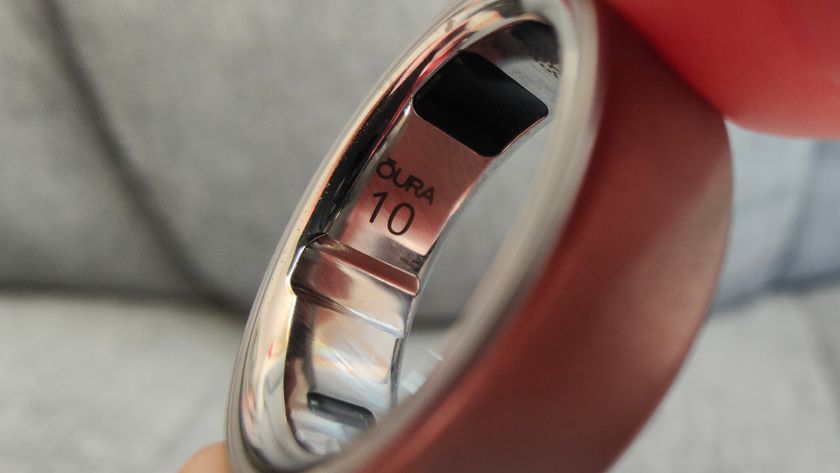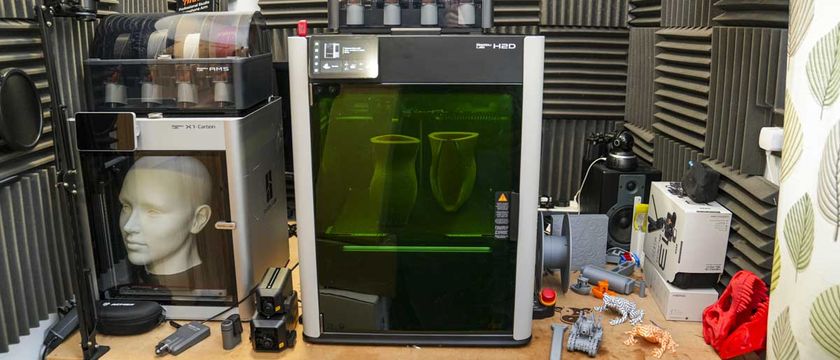Why you can trust TechRadar
Pairing the Martian smartwatch is easy enough on iOS and Android. The latter requires an extra step of buttoning through the options on the watch to put a checkmark for Android. After that, all you'll need to do is launch the app and follow the instructions.

The main feature of the Martian Notifier is of course, notifications. Whether it's an email, phone call, text, Facebook update, Twitter DM or what have you, if it pops up as a notification on your mobile device, you'll get the same ping mirrored on the Notifier. Beyond system apps, there's also support for third party apps including ESPN and Snapchat.
The smartphone app picks out every compatible app from the get-go, but there's the option to disable any unwanted updates filtering the list to a shorter stack. You can also set up custom vibration patterns for every type of notification letting you identify them without looking at your wrist.

While the system works well enough, it's also annoying waiting for the scrolling text to show the entire message. Even with the speed set to max, I find it's much simpler and easier to read the whole notification at a glance on wearables like the Pebble Smartwatch. Since the Martian Notifier only has a tiny sliver of a digital screen, this also makes it useless for anything aside from text notifications.
Features and app
Another problem with the Martian Notifier is its bare bones simplicity. Aside from notifications, you can launch your smartphone's voice control, Siri on iOS and Google Now on Android, with the push of a button on your wearable - but you're still saying commands into the handset's microphone. Essentially, you're already holding your smartphone or wearing a pair of microphone equipped headphones connected to the device - most of which can trigger the same command with a long press of the remote button. Ultimately this makes the feature redundant since you're not actually speaking into the smartwatch.

Aside from this you can program the app to push the current weather forecast to the smartwatch, set up a silent alarm clock, or remotely trigger the smartphone camera. There's also a panic button for finding your paired smartphone as well as an option to leash the wearable to the smartphone - which will cause the Notifier to buzz when you've gotten too far from your handset and disconnects. That wraps up everything you can do with the Notifier.
By comparison, the lower priced $99 (about £63, AU$117) Pebble has all of the same features as the Notifier and can act as a pedometer, thanks to a Misfit app, while throwing in music controls and much more. The same goes for the identically priced Samsung Gear Fit, which does even more as an activity tracker equipped with a heart rate monitor.
Battery Life
In my testing, the Martian Notifier died after a surprisingly short four days, considering the only smartwatch bits include a bluetooth module and one small LED panel. The maximum specified battery life is five days, which you should be able eke out by limiting the number of notifications that appear to a select handful.

Luckily even if you forget to charge the smartwatch, the analog watch runs on a separate battery rated for five years. Charging the device, meanwhile, requires the included micro USB cable because the charging port is seated further inside the Notifier's chassis.
Compatibility

One of the great things about the Martian Notifier is that it will work with practically any device you throw at it. iPhone 4S and any model above are all good to go. Android phones are also almost universally supported, so long as you're using a device with at least Android 2.3.3. I can also personally vouch that the Martian Notifier works well with the iPhone 6 and HTC One M8, as well as the Nvidia Shield tablet.
Current page: Features, app and battery life
Prev Page Introduction, design and interface Next Page VerdictKevin Lee was a former computing reporter at TechRadar. Kevin is now the SEO Updates Editor at IGN based in New York. He handles all of the best of tech buying guides while also dipping his hand in the entertainment and games evergreen content. Kevin has over eight years of experience in the tech and games publications with previous bylines at Polygon, PC World, and more. Outside of work, Kevin is major movie buff of cult and bad films. He also regularly plays flight & space sim and racing games. IRL he's a fan of archery, axe throwing, and board games.





















